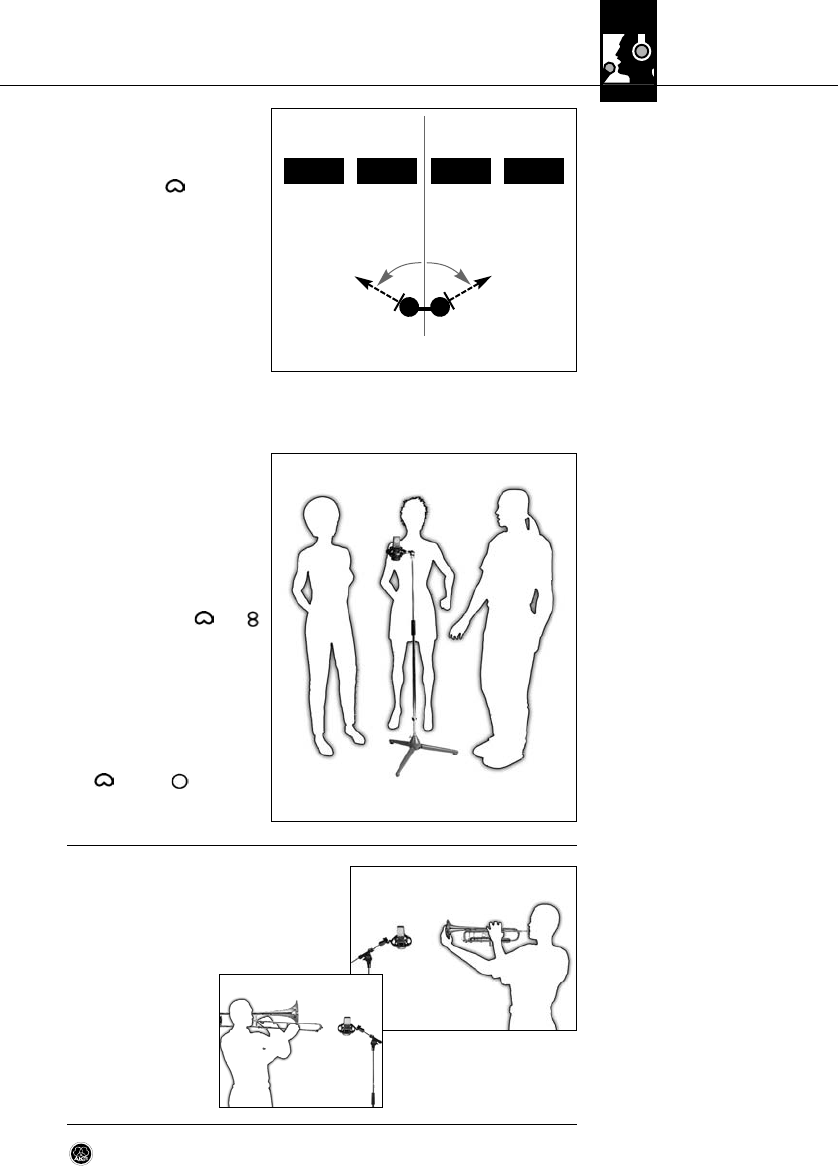
11PERCEPTION 820 TUBE
4 Using the Microphone
Fig. 7: Using a stereo pair to
record a choir.
Fig. 8: Backing vocalists
sharing a single microphone.
4.4.3 Trumpet, Trombone
Fig. 9: Trumpet (a),
trombone (b).
• In rooms with good acoustics,
a pair of PERCEPTION 820
TUBEs will often do the trick.
- Set each microphone to
cardioid ( ).
- Use an optional H 50 stereo
bar to mount the two mi-
crophones on a stand.
• Place the stereo pair about
10 feet (3 m) in front of the
choir, about 8 feet (2.4 m)
above the ground.
- Aim the stereo pair at the
center of the choir.
- Turn the left-hand micro-
phone 60 degrees to the left and the right-hand microphone 60 degrees to the right.
Backing vocals/technique 1:
Refer to section 4.4.1 Lead Vocals above.
• If you have enough tracks avail-
able, we recommend overdub-
bing each voice separately.
Backing vocals/technique 2:
• If you use a separate micro-
phone for each of several vo-
calists simultaneously, set each
microphone to hypercardioid (a
position between and )
to prevent crosstalk, particularly
if you place the microphones
close to one another.
Backing vocals/technique 3:
• Refer to fig. 8. If you use a sin-
gle microphone for the entire
group, select the cardioid
( ) or omni ( ) pattern and
place the vocalists in a semicir-
cle in front of the microphone.
• Place the microphone about 1 foot (30 cm) in
front of the instrument, slightly off the bell
axis.
• Switch the preattenuation pad in.
• To reduce blowing noise, a PF 80 pop screen
(available as an optional accessory) between
the microphone and
instrument.
a
b
B T A S
60°60°
H 50
Perception_820_Manual_final4_C030818 02/05/2009 11:26 Seite 11 (Schwarz/Black Auszug)


















